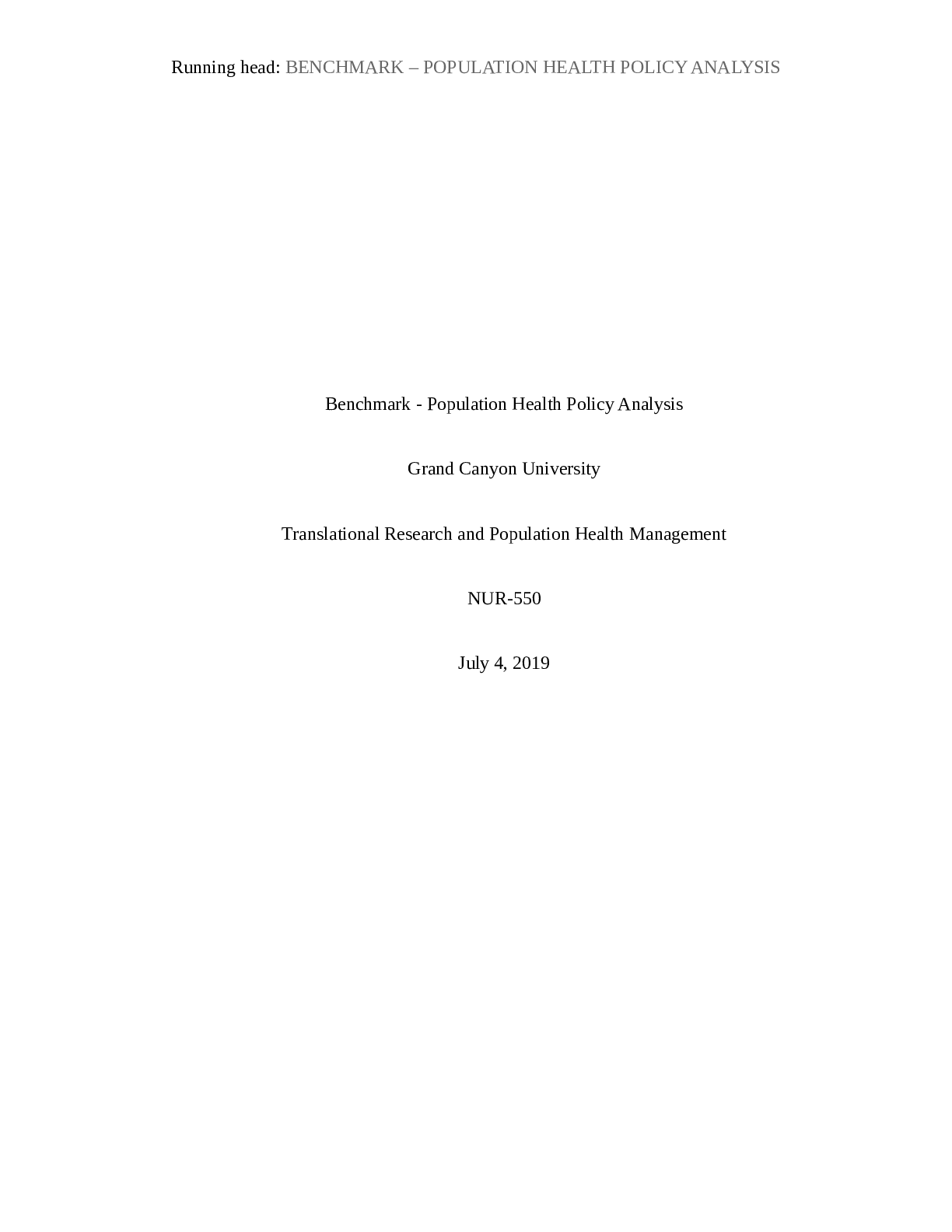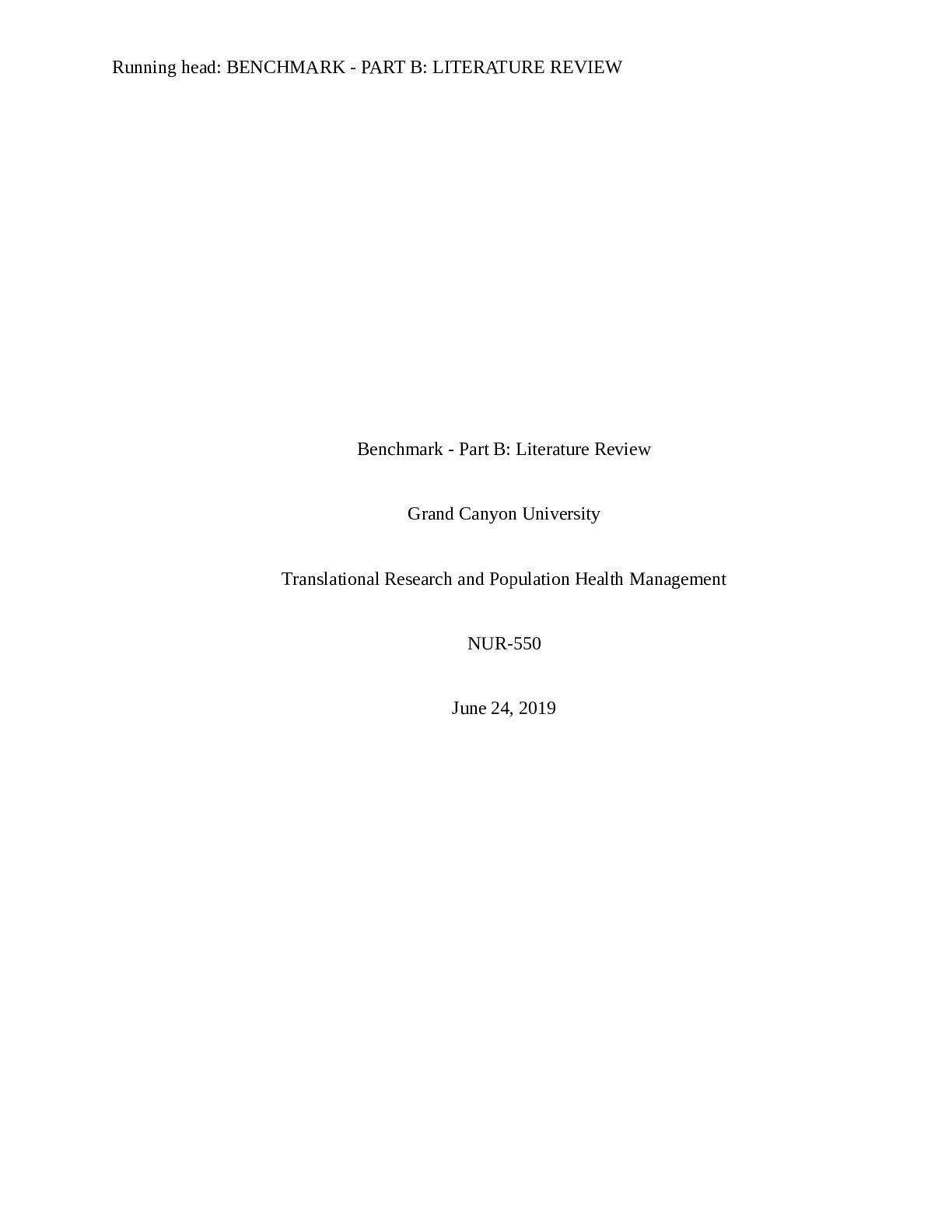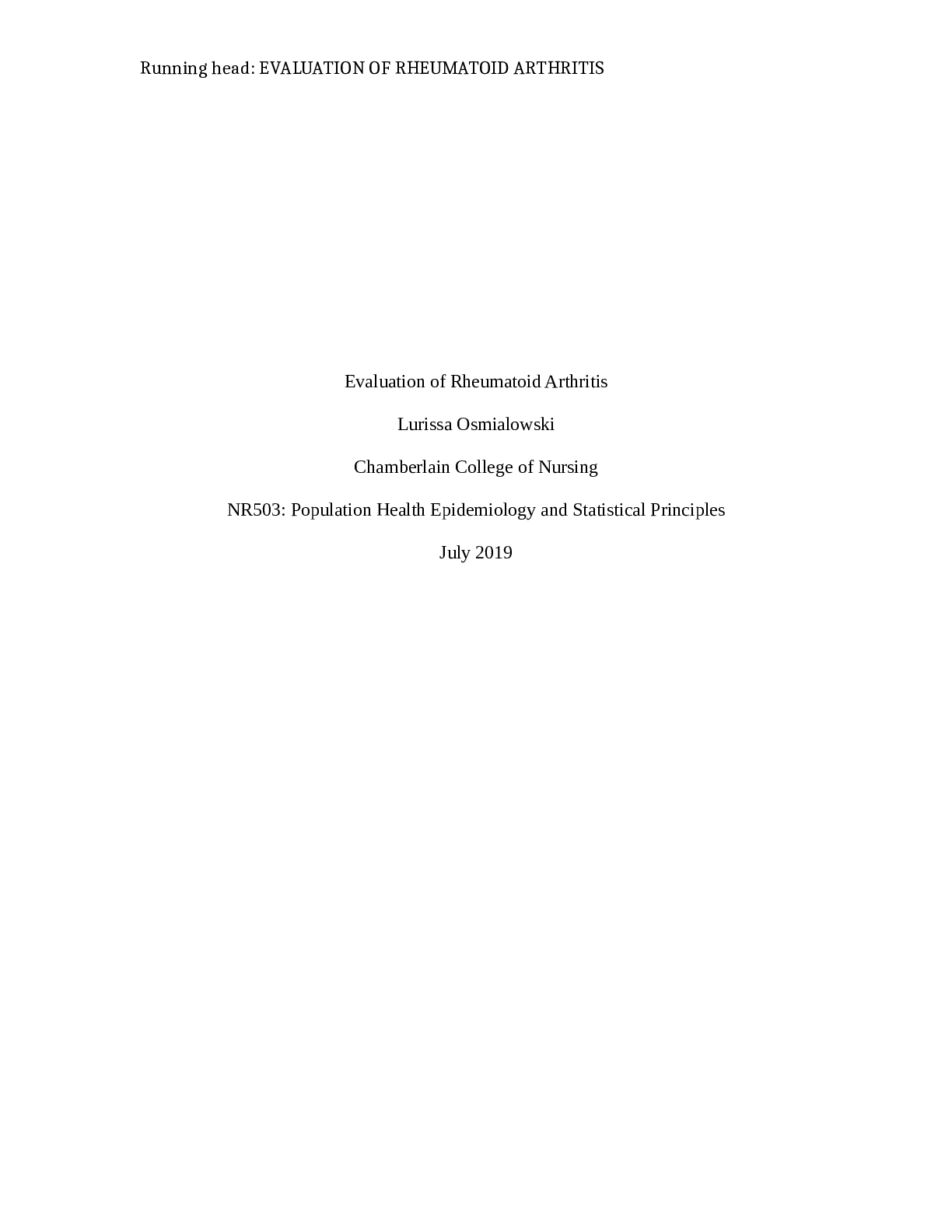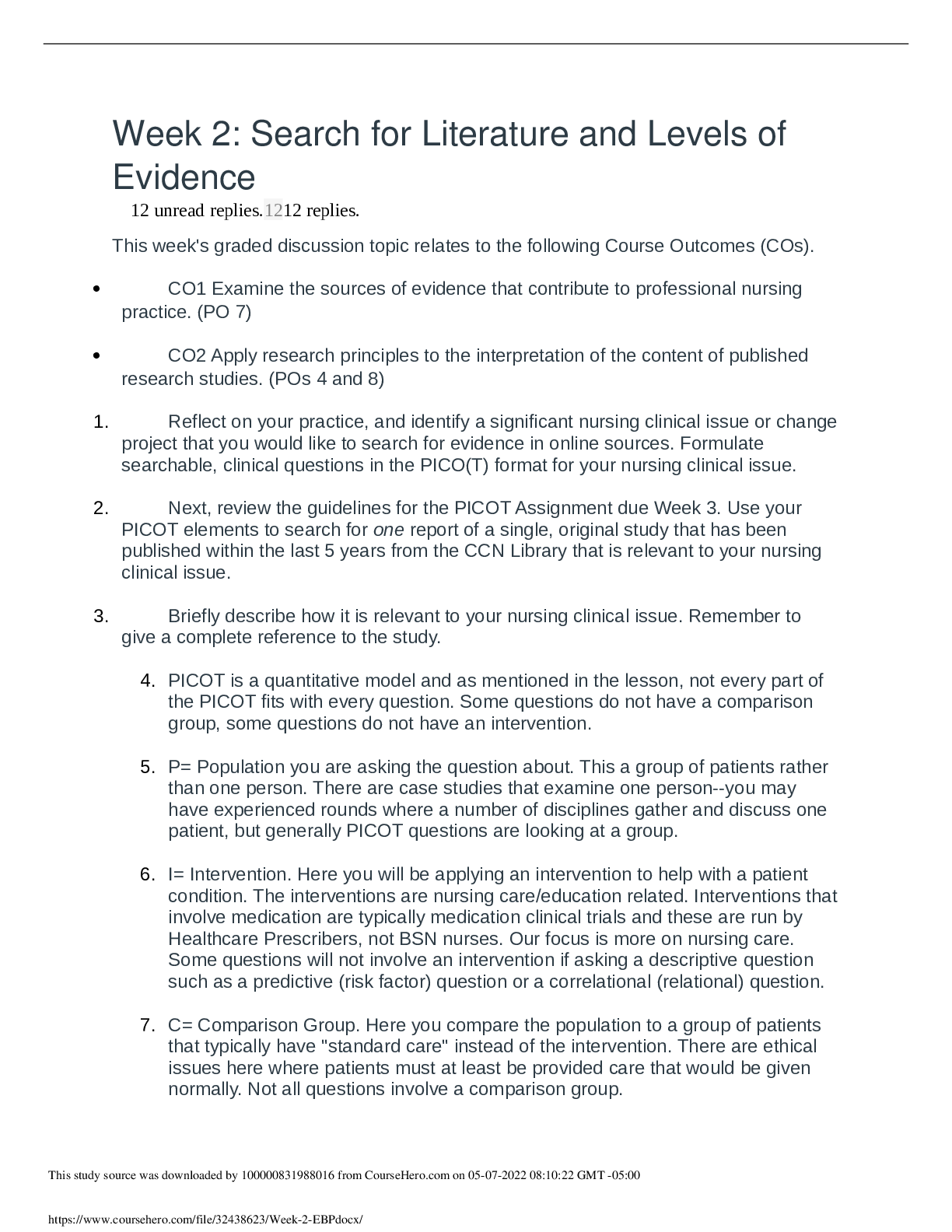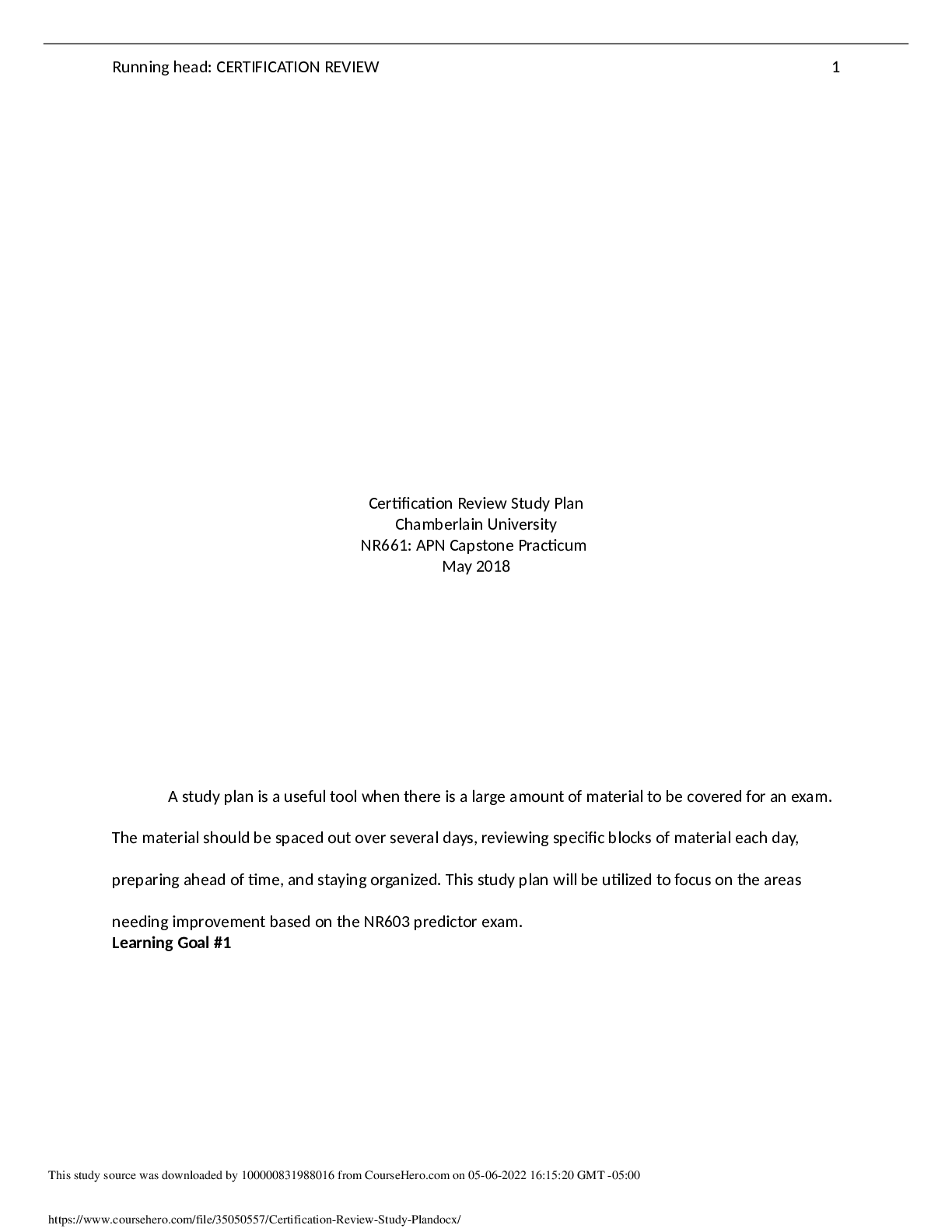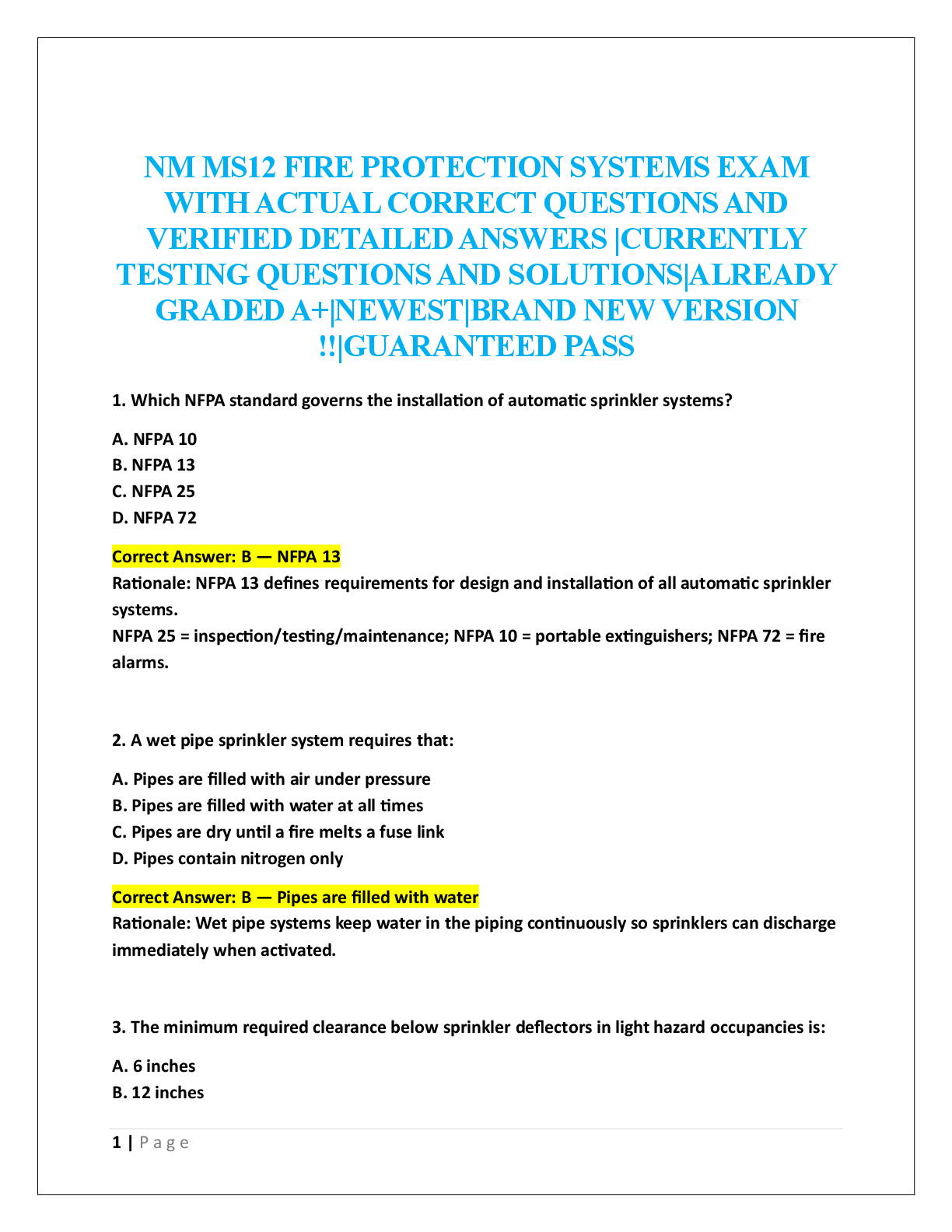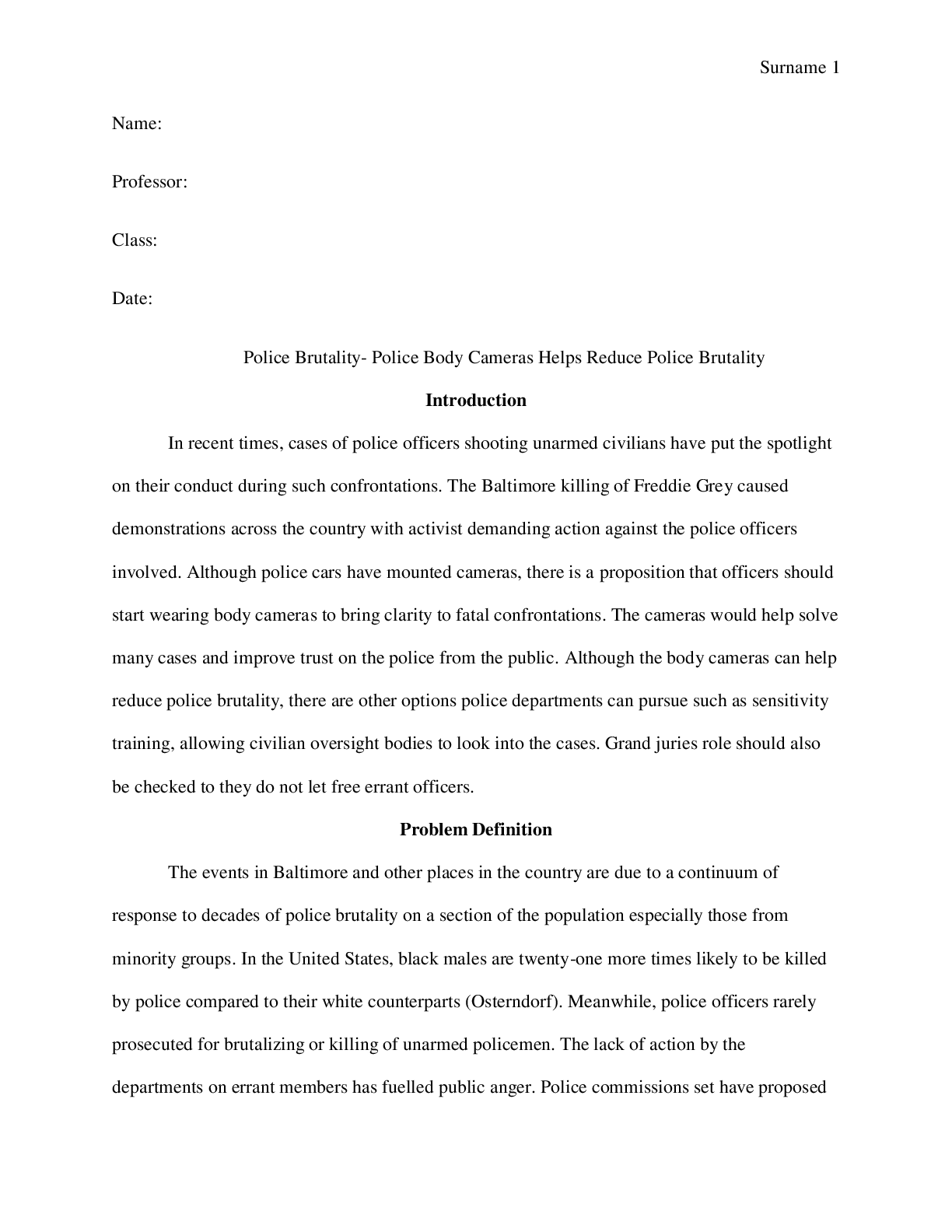GRADED BUS 607 Week 1 Assignment Business Entity Comparison
Document Content and Description Below
Running head: BUSINESS ENTITY COMPARISON 1 Business Entity Comparison This study source was downloaded by 100000831988016 from CourseHero.com on 04-29-2022 13:33:32 GMT -05:00 https://www.coursehe ... ro.com/file/30414452/BUS-607-Week-1-Assignment-Business-Entity-Comparisondocx/ BUSINESS ENTITY COMPARISON 2 Business Entity Comparison One of the most critical steps of starting a business is determining the most efficient business structure the company will operate under. Establishing how a business is structured will determine the “operating efficiency, transferability, control, the way the company report income, the taxes they pay and their personal liability.” (Misenti, 2016, par. 1). The business entities covered in this week’s lecture are Sole Proprietorships, Partnerships, Corporations, and Limited Liability Corporations. These business entities vary across the business market due to the distinct characteristics they hold; different formation and termination processes, owner liability, tax implications, and advantages and disadvantages. Sole Proprietorship Companies that operate as a sole proprietorship are owned and run by one individual, and the business is inseparable from its owner. Forming a sole proprietorship is relatively easy and inexpensive. Although owners are not required to register their company, they must have a company name and obtain a business license before starting their business operations. Besides, the owner must acquire any permits, zoning clearance and an Employer Identification Number (EIN). Sole proprietorships are one of the simplest, least expensive and most common types of business to form. Another significant advantage of this business entity is that the owner is entitled to all the profits since they assume all the risk involved in operating this type of business. Also, the owner is entirely responsible for creating the company’s policies and making important decisions. The main disadvantage of a sole proprietorship is associated with owner liability. Being the sole owner of the business; the owner is legally responsible for all liabilities incurred through debts and lawsuits. As a result, the owner is at risks for losing both personal and business assets. The owner is also responsible for obtaining all the capital required to operate the This study source was downloaded by 100000831988016 from CourseHero.com on 04-29-2022 13:33:32 GMT -05:00 https://www.coursehero.com/file/30414452/BUS-607-Week-1-Assignment-Business-Entity-Comparisondocx/ BUSINESS ENTITY COMPARISON 3 company, which can be difficult. There is also a lack of continuity when operating a sole proprietorship because if the owner dies, the company automatically dissolves. Concerning taxation, the owner has to incorporate the business taxes on their personal taxes and any taxes due becomes the owner’s responsibility to pay. Depending on the nature of the sole proprietorship business, terminating the business may involve a multipart process. Usually, the termination process entails informing employees, vendors, and customers in writing that the business is closing. The employer will proceed with paying final salaries, clearing all debts, and filing of final tax documents for both company and employees. The owner should also cancel business licenses associated with the business and deactivate their assigned EIN. Partnerships Under this business entity, two or more partners manage the business with the intentions to share profits. Some of the key aspects of forming a partnership are generating a name, executing a partnership contract, acquire the appropriate business licenses and certifications, and an Employer Identification Number (EIN). The owner liability of the partners in a partnership primarily depends on the law of the state in which the company exists, and in most states, the liability is actually unlimited. Furthermore, partners are legally responsible for the liabilities obtained by the company. Concerning taxation, partners do not pay taxes on profits, and as “the profits are earned, they flow through the partnership directly to the partners” (Windrow, 2008, pg. 67). Additional advantages of a partnership includes easy formation, offers flexibility for owners, and is a simple structure to op [Show More]
Last updated: 3 years ago
Preview 1 out of 6 pages

Buy this document to get the full access instantly
Instant Download Access after purchase
Buy NowInstant download
We Accept:

Also available in bundle (1)
Click Below to Access Bundle(s)

ASHFORD UNIVERSITY BUS 607 Business Law for the Accountant Week 1-6 Discussions/Assignments/Final Paper
Assign Business Entity Comparison Week 1 Discus Assign Violations of Securities Laws Week 2 Discus Assignment Prepare a S Assignment Ethical Consideration of Creditors’ Rights and Bankruptcyales Contr...
By Nutmegs 3 years ago
$27
12
Reviews( 0 )
$9.00
Can't find what you want? Try our AI powered Search
Document information
Connected school, study & course
About the document
Uploaded On
Apr 29, 2022
Number of pages
6
Written in
All
Additional information
This document has been written for:
Uploaded
Apr 29, 2022
Downloads
0
Views
163

